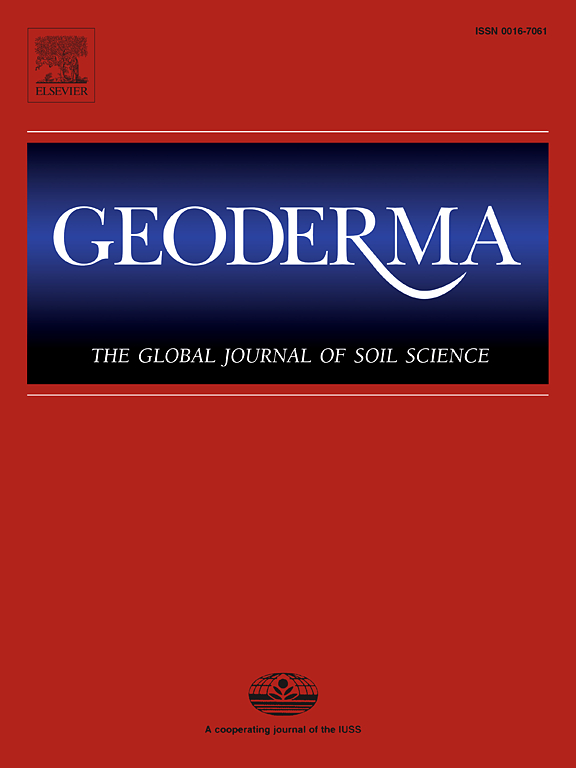Relict charcoal hearth magnetic fingerprints in the forest topsoil
IF 6.6
1区 农林科学
Q1 SOIL SCIENCE
引用次数: 0
Abstract
The relationship between the magnetic properties and fire-affected soil is crucial for environmental inference, especially in the case of soil magnetic enhancement by thermal transformation of iron minerals. Generally, there are no studies reporting relict charcoal hearths using magnetic analyses. This gap is addressed in our work. Moreover, we also fill the gap regarding how long fire-related magnetic enhancement may persist in soils. Hence, the data may also influence the development of research on pyrogenic magnetic enhancement of soils. The preliminary research was aimed at verifying the possibility of using some environmental magnetism parameters to detect differences in the soil magnetic signal with and without relict charcoal hearth (RCH). Consequently, to understand and describe the mechanism of pyrogenic magnetic enhancement in charcoal-enriched horizon (CEH), research into its magnetic features was initiated. This work was carried out on three soil profiles (Albic Brunic Arenosols), both RCHs and reference. The magnetic data obtained during the study showed variable contribution of magnetic particles in soil horizons, which indicates pyrogenic magnetic enhancement related to the presence of superparamagnetic (SP) grains in the charcoal particles from CEH in the RCHs soil profile. Despite the oxidation of SP grains of ferrimagnetic minerals over time (200–250 years) superparamagnetic magnetite and/or maghemite are still responsible for the pyrogenic magnetic enhancement in soil.
森林表层土壤中残留木炭炉磁指纹
土壤的磁性与火灾影响土壤之间的关系对环境推断至关重要,特别是在铁矿物热转化增强土壤磁性的情况下。一般来说,没有使用磁分析报告遗留木炭炉的研究。我们的工作解决了这一差距。此外,我们还填补了关于与火有关的磁增强在土壤中持续多久的空白。因此,这些数据也可能影响土壤热原磁增强研究的发展。初步研究的目的是验证利用一些环境磁参数来检测有和没有残炭炉(RCH)土壤磁信号差异的可能性。因此,为了解和描述富炭层(CEH)热原磁增强机理,开展了富炭层磁特征研究。这项工作是在三个土壤剖面(Albic Brunic Arenosols)上进行的,包括RCHs和参考土壤。研究期间获得的磁性数据显示,土壤层中磁性颗粒的贡献是可变的,这表明在RCHs土壤剖面中,CEH的木炭颗粒中存在超顺磁性(SP)颗粒,这与热原磁性增强有关。尽管铁磁性矿物的SP颗粒随着时间的推移(200-250年)被氧化,超顺磁性磁铁矿和/或磁铁矿仍然是土壤热原磁性增强的原因。
本文章由计算机程序翻译,如有差异,请以英文原文为准。
求助全文
约1分钟内获得全文
求助全文
来源期刊

Geoderma
农林科学-土壤科学
CiteScore
11.80
自引率
6.60%
发文量
597
审稿时长
58 days
期刊介绍:
Geoderma - the global journal of soil science - welcomes authors, readers and soil research from all parts of the world, encourages worldwide soil studies, and embraces all aspects of soil science and its associated pedagogy. The journal particularly welcomes interdisciplinary work focusing on dynamic soil processes and functions across space and time.
 求助内容:
求助内容: 应助结果提醒方式:
应助结果提醒方式:


